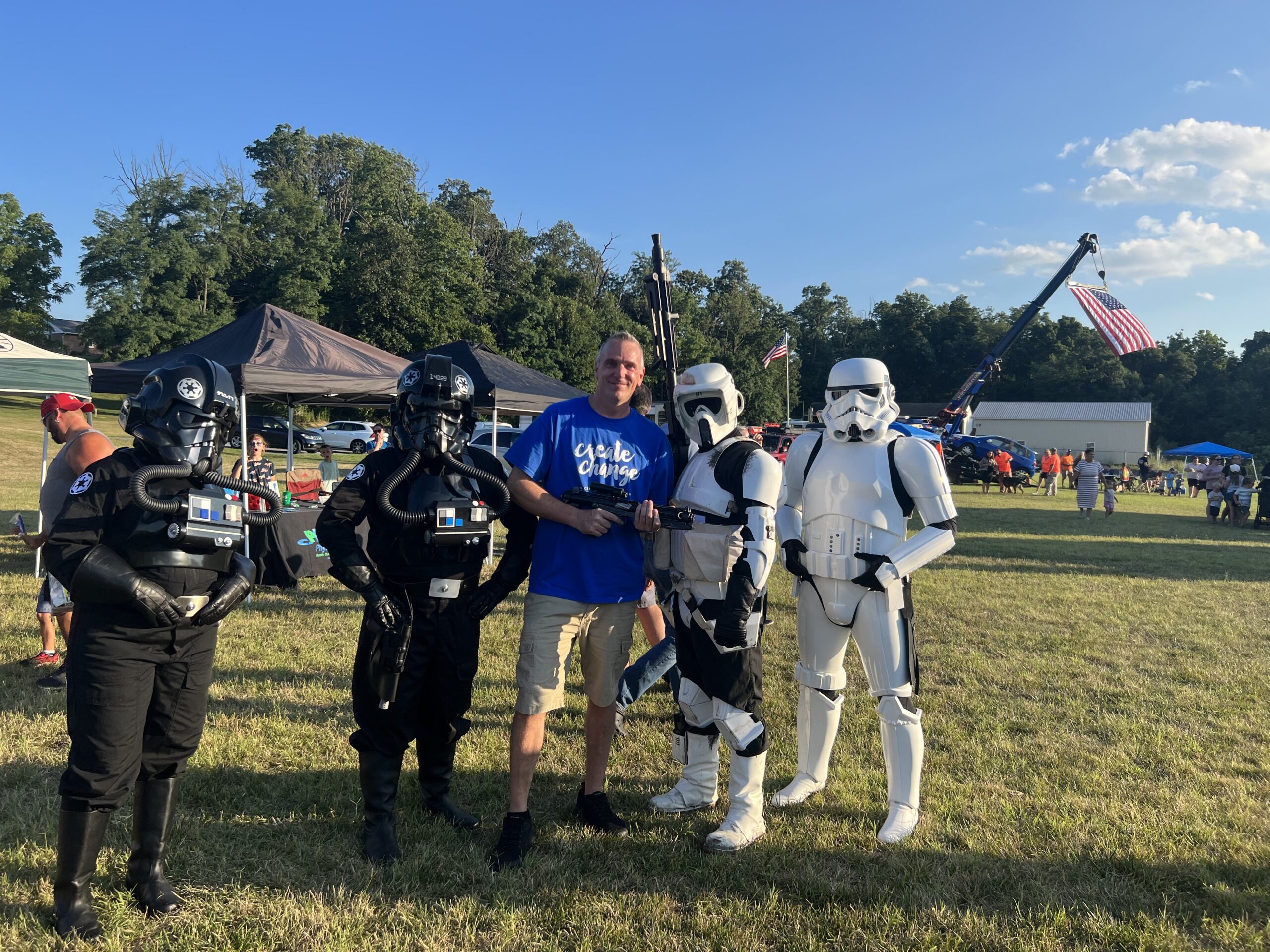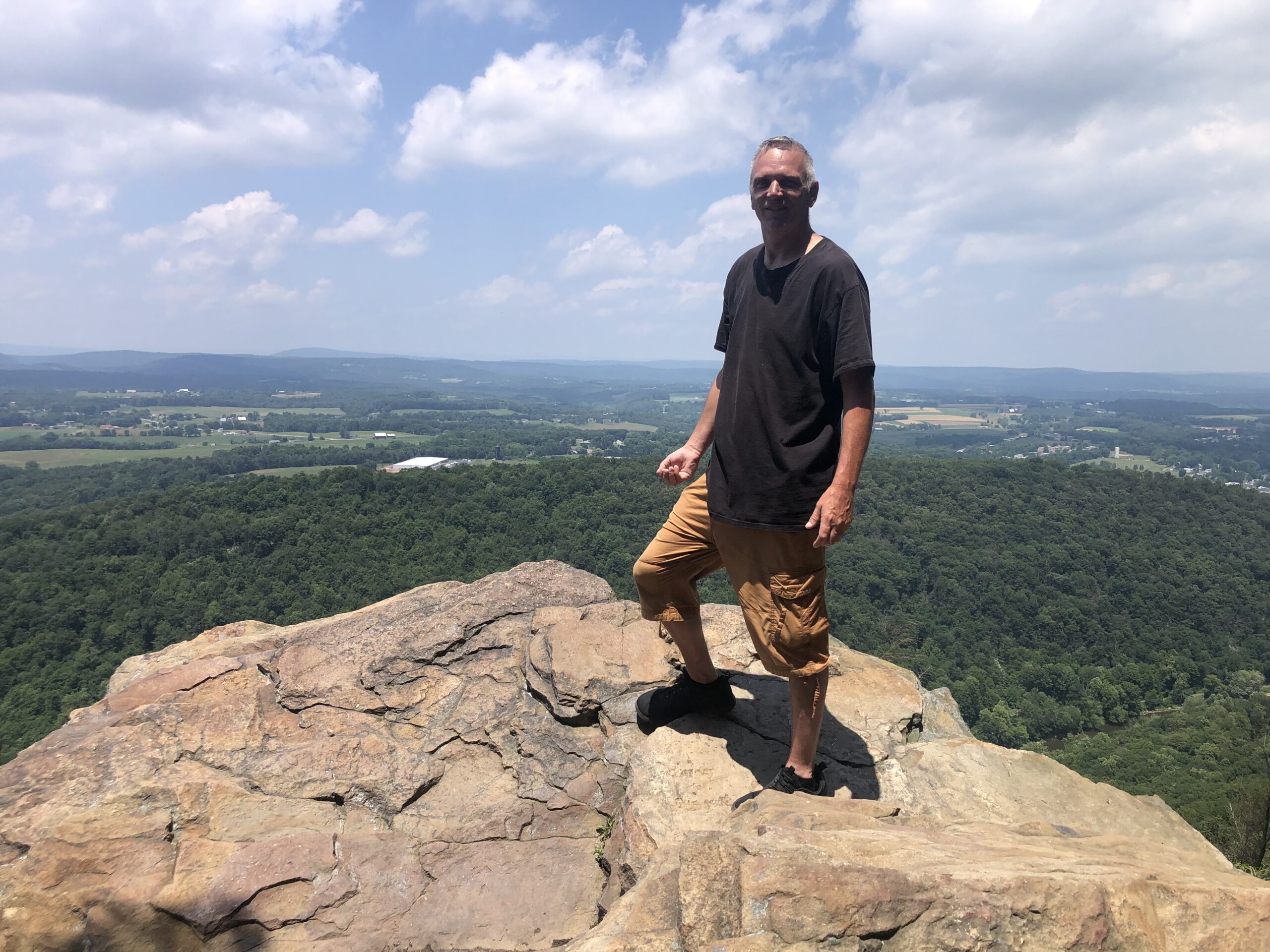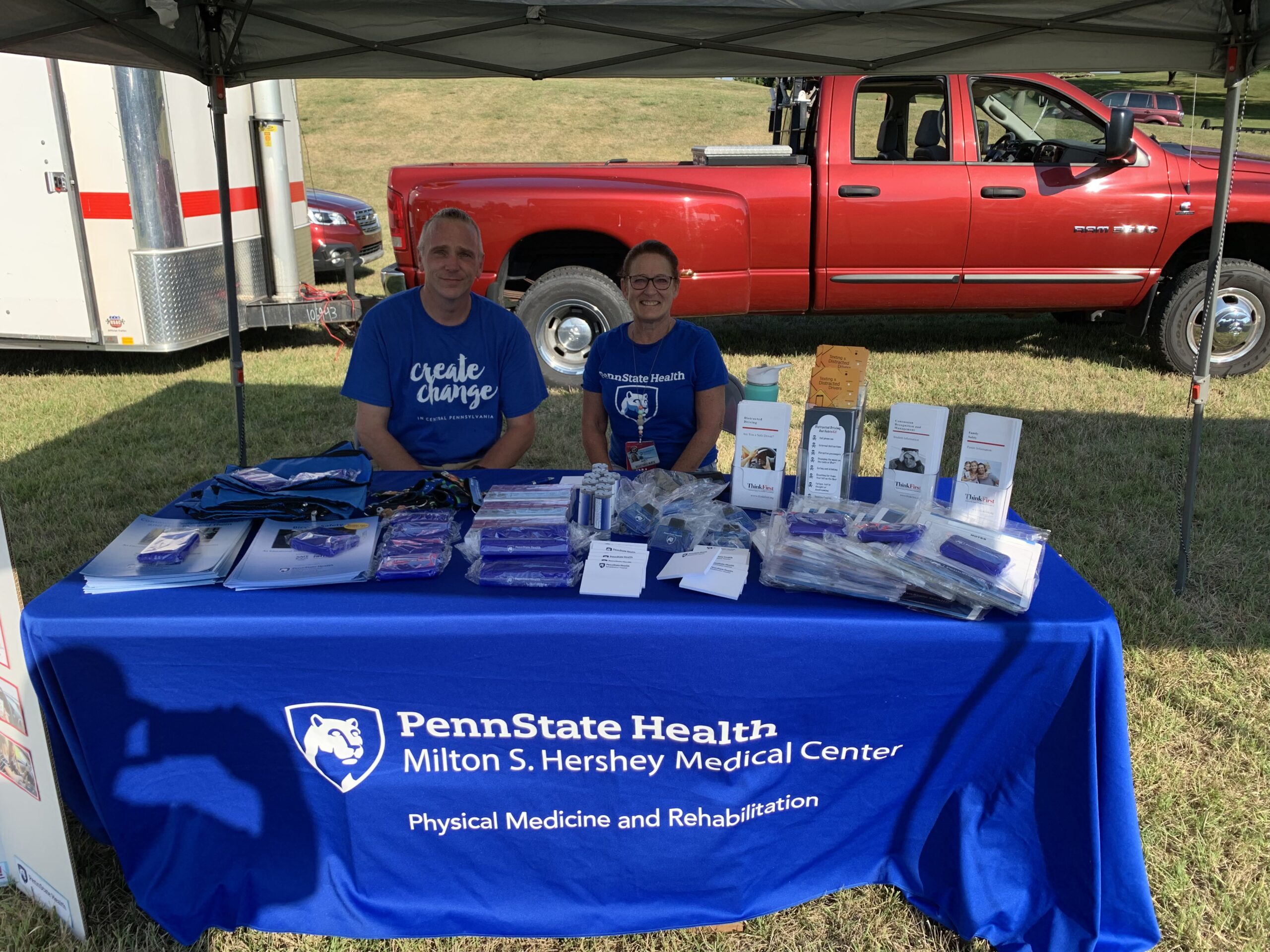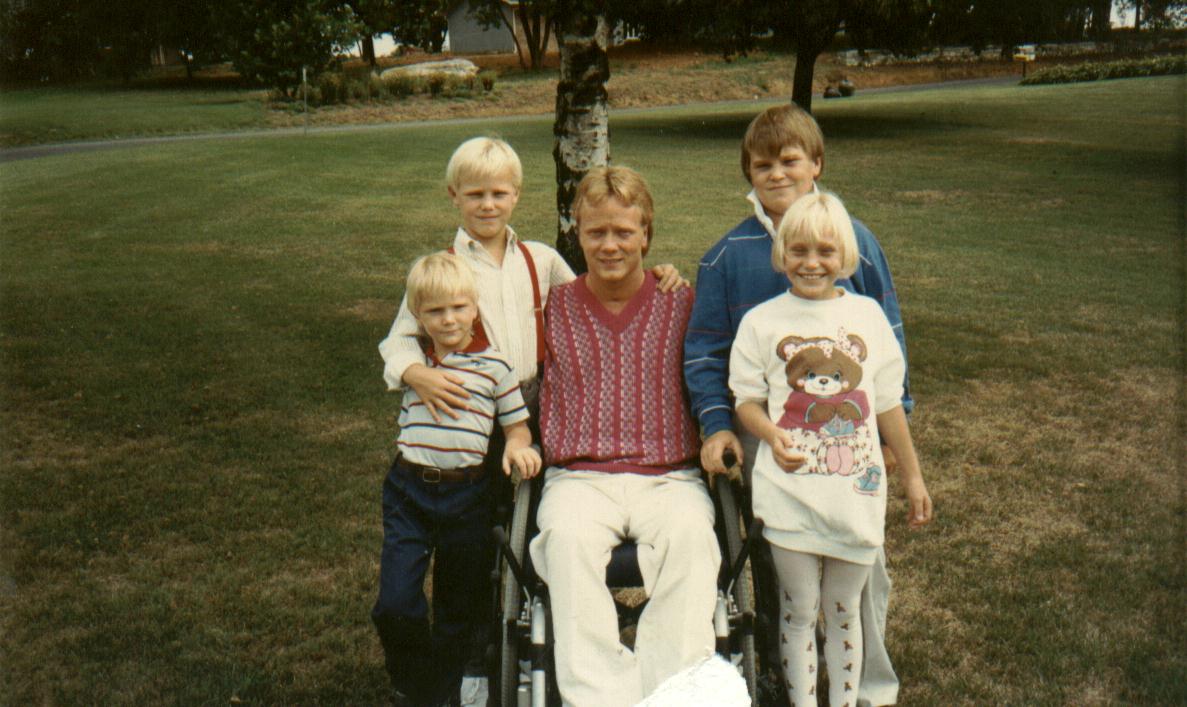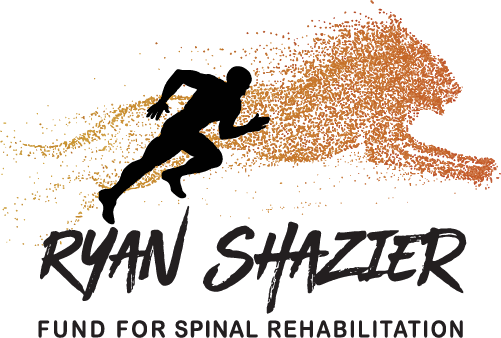by Cathy Cuff-Coffman
Craig Horst’s cervical spinal cord injury led him to a new career – and a new outlook on life
Visit the rehab gym at Penn State Health Rehabilitation Hospital in Hummelstown, PA and you’ll meet a tall, boyish-looking man of about 42 years old. His closely cropped grey hair frames a face that never loses a smile and his trim frame has a confident bounce in his step.
This is Craig Horst, a lifelong resident of neighboring Lebanon, PA. He is a therapy aide for the rehab hospital, working alongside physical and occupational therapists. He helps with equipment needs, disinfecting, patient transfers, and anything else that makes the rehab clinic run efficiently.
If Horst is not busy assisting physical or occupational therapists, he greets rehab patients with a hearty fist bump (if appropriate) and inquires how they are doing.
First, A Patient
Horst’s ebullient demeanor belies the fact that six years ago, he was a patient at PSU Rehab, having suffered devastating cervical breaks and a high cervical spinal cord injury.
“Life handed me a one-two punch,” Horst says, explaining that his 18-year marriage had sadly ended the year before. “From there, my main focus was to reestablish structure for my three children, Teria, Tasia, and Tadan, during the separation.”
As Horst was laying his new foundation and getting structure for his children, he and his oldest daughter, Teria, were in a terrible car accident.
“It was October 16th of 2018,” says Horst, “about a year after my divorce. My oldest daughter and I were taking a drive, and the car might have hit a road imperfection.”
Horst next saw that he and then 16-year-old Teria were heading for an embankment and a telephone pole.
“That’s all I can remember,” he recounts. He says he saw the embankment, then woke up and started frantically searching for Teria.
But he couldn’t move.
“Where’s My Daughter?”
Horst could see debris all around him but was unaware he was upside-down. “I didn’t see my daughter,” he says, “and that frightened me because it’s a parent’s worst nightmare. I thought she was ejected from the car.”
Horst was passing in and out of consciousness and was aware of the “Jaws of Life” being used to extract him from the vehicle. “But I only had one thing on my mind: ‘Where is my daughter?’”
Once Horst was in the ambulance, he says he was still fading in and out of reality. “I finally came to in Penn State Health, Milton Hershey Medical Center,” he says. By that time, Horst’s family surrounded him, and he learned that Teria was able to extract herself from the car and call 911.
“Honestly, I knew I needed surgery, but I wasn’t going into any operating room until I saw Teria,” he says. “I felt like I was fighting for my life just to see her. It was weird, once I knew she was okay, then I felt okay.”
But little did Horst realize how critical and timely his surgery was needed.
A Devastating Injury
The car accident caused Horst to break cervical (neck) vertebrae C4 to C7, crushing his spinal cord in those critical areas. A man of faith, he feels it’s no coincidence that his surgeon was Dr. Jesse Bible.
Horst’s first few days after surgery were rough. He developed an infection and fever, which delayed his transfer to Penn State Health Rehabilitation Hospital.
“I’ll be honest with you,” Horst admits, “on those first days, I kind of quit.”
Horst then shares that he looked at his hands. With a cervical injury, hands are often affected and form into a soft fist. “I looked at my hands, and I thought of my Uncle Mike [Horst] who was a quadriplegic, paralyzed from the neck down.”
Uncle Mike has since passed, and Horst believes that his uncle has served as a guardian angel for him. He decided to “snap out” of his brief pity party and get on with the business of rehabbing his broken body.
“I needed to get home to my kids,” Horst says, and used that as his driving factor to give inpatient rehab everything he had.
“I’m like, ‘Who the hell am I to quit when (my family and Uncle Mike) never quit!’” Horst decided to ditch the negatives, grasp the positives, and do his best to build himself up from that changed attitude.
Inpatient Rehab Bound
Once Horst’s fevers left, he was transferred next door to the inpatient rehab on October 27, 2018.
“I was scheduled to be in rehab until the end of November, so roughly a month,” says Horst. “But it was like something switched in me and I just pushed through that self-torture (of physical rehabilitation).” He says he turned his depression into a drive to get back to his kids.
“If I didn’t have that anger or that drive behind me, would I have pushed through it? I question that.”
Horst harnessed his inner drive so much that he was able to use a walker to leave inpatient therapy on November 6th -only two weeks after entering rehab.
(Disclaimer: This is not typical of cervical spinal cord injuries. Please remember that spinal cord injuries are like fingerprints – No two are alike.)
Horst admits that he wouldn’t recommend his “rehab tactics” to everyone, especially now that he works in the field.
Consistently Challenging
Almost miraculously, Horst, given just a 5% chance of walking again, found himself challenging himself in ways he never thought he would.
“I was blessed enough to go ice skating,” he laughs. “It was fearful, yeah. But at the same time, you got to swallow some of your fear to see what you can and can’t do.”
Horst admits that he broke a lot of the rules along the way, and in hindsight, he wouldn’t advise others to follow his lead. “What I did wasn’t the smartest,” he admits, “but I mean, with the divorce and all…I was on my own, and that was me. In my mind, that was me pushing myself.”
It took Horst two years to fully realize his potential and says that even now, he still notices progress.
“I hit what insurance companies would call a ‘baseline’ in my first six months,” says Horst, “but now, six years later, I notice improvements in myself.”
For instance, Horst can run! “Honestly, I consider myself truly, truly blessed., It would amaze you what I can do.” In short, Horst is one of those people who has constantly tested his limits, and “no SCI is gonna hold me back.”
Horst’s Kryptonite
However, there is one constant that can knock Horst for a loop. “Cold (temperatures) are my kryptonite,” he says, sadly. “It will shut me down and send me into full-body spasms.”
Since Horst still deals with a lot of the neuropathy and the spasticity side of things, he decided he’d try to turn that negative into a positive – for others.
He found a warm, specialty blanket that soothed his spasms. Horst contacted the blanket company, explained his condition, and how the blanket provided a solution.
He then called upon Penn State Health Rehabilitation Hospital’s Nancy Lokey, RN, CRRN, CBIS, and director of the rehab’s very active spinal cord injury support group. Horst attempted to broker a deal in which the blanket company would donate blankets to the spinal cord injury population at the rehab hospital.
“So many of us have issues regulating our body temperature,” says Horst. This phenomenon is called “thermoregulation” and affects many in the SCI population.
The donation deal fell through, but another deal matriculated. Lokey was so impressed with Horst’s care and compassion that she encouraged him to apply for a job at the inpatient rehab.
A Blanket Deal
Horst had tried to rejoin his former employer, a large warehouse. Horst was a “picker,” fulfilling large orders on a tight timeframe. However, that job’s extreme physical nature and stress caused Horst to leave reluctantly. When Lokey made her proposition, Horst once again found himself at a crossroads.
“I had just gotten a new house,” says Horst, “and I was trying to get a structure and foundation in place for my kids.” He had applied for – and was denied – disability three times.
“I filled out an application, realizing I had no training or background for any of the jobs at the inpatient rehab – well, except for housekeeping!”
But Horst had “life experience:” he was living, walking proof that working hard in physical rehab does help SCI patients improve their quality of life.
“I was intimidated in the interview (with the rehab hospital),” says Horst, “but I had nothing to lose.”
Horst thought his selling point was he was intimately familiar with spinal cord injuries. “I know what it’s like to have an injury and battle back from it,” he theorized. “But my whole point of going to the interview was I felt like I was returning to the front lines to help others.”
Horst also credits his involvement with online spinal cord injury support groups, some of which he found on Facebook.
Support from The Supported
“Once I realized how blessed I was when I joined their support groups, it really opened my eyes because I was constantly comparing myself to my Uncle Mike,” he says.
Horst has been a therapy aide for two years at Penn State Health Rehabilitation Hospital.
He says the most rewarding part of his job is “helping others.” The most challenging aspect is remaining humble about his recovery while also trying to have a positive impact on the patients.
“I don’t want to mislead anyone,” Horst says when talking about his remarkable recovery. “As you know, everyone is different. Everyone recovers at their own pace.”
“I try my best to be positive and remain optimistic, not only for me but also for other patients,” says Horst. He knows first-hand how any negativity can derail a recovery effort.
“Strangely I am grateful for my injury,” muses Horst.
“It’s made me very grateful for the smaller things in life. It makes me appreciate others, and it has helped me become a better person.”
Shalieve
Wisdom
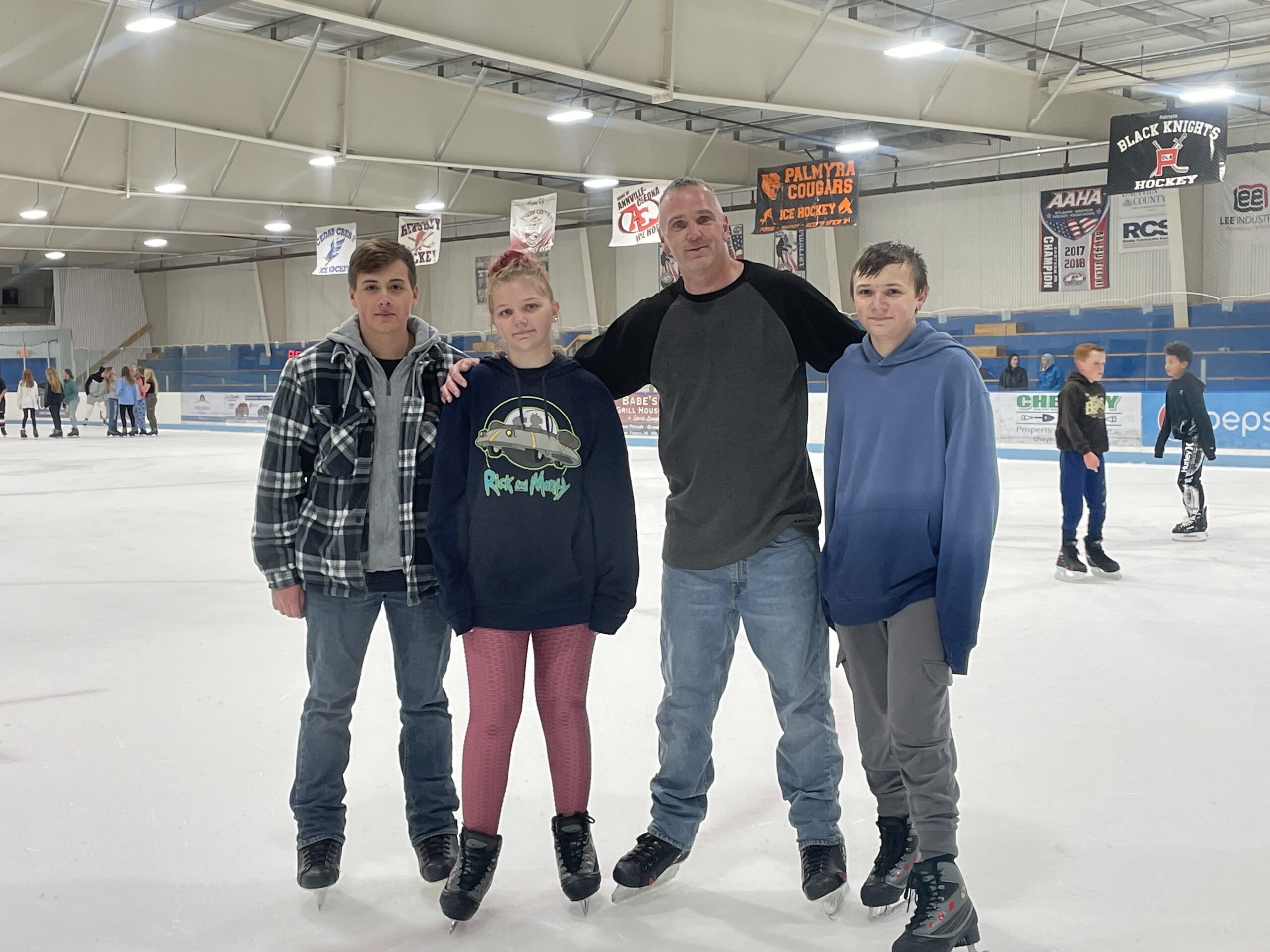
Craig Horst's Shalieve Words of Wisdom
Develop Patience. “If you can give yourself patience, you'll be amazed at what you can accomplish versus giving up or getting frustrated.”
Focus on the smaller goals. “I just wanted to walk – I just wanted that bigger goal back, so I wasn't focused on sitting and trying to wiggle and exercise my toes…the smaller goals that my therapists were giving me. I needed to slow down, have patience, and attain those smaller goals.
Create a Valuable Support System. “I wouldn't be where I'm at without mine. Because we all know, battling an injury like this, it's tough to do it alone.”

